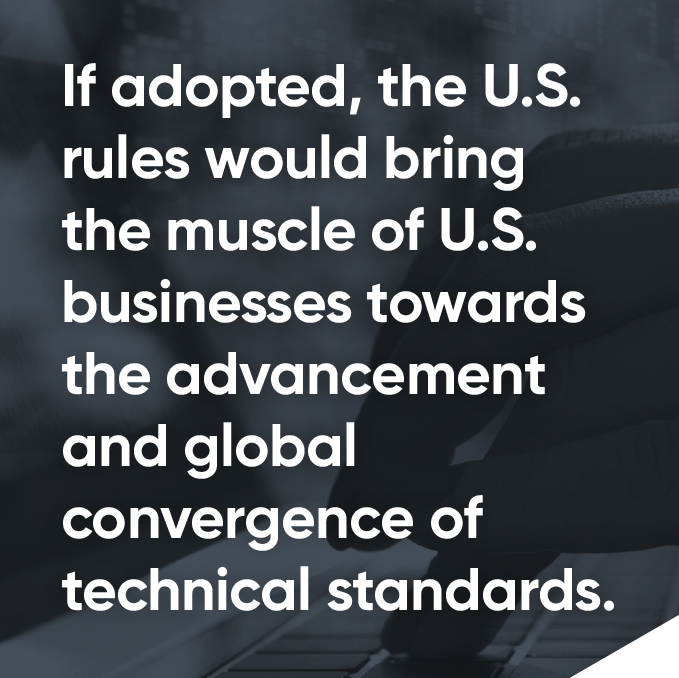Sustainable investing disclosures in the U.S. are currently governed by general fraud prohibitions in advertising and not by formally defined rules, apart from interpretive guidance issued by the SEC in 2010 about certain material impacts caused by climate change. In the absence of ESG regulations, investment managers have latitude to define relevant ESG factors when marketing their strategies. Such lack of standards can lead to “greenwashing “- or making claims that a strategy is more sustainable than it is.
But the end of that era may be coming soon. Earlier this year, the U.S. Securities and Exchange Commission (SEC) proposed a new rule requiring listed corporations to disclose climate-related risks affecting the corporation and information about greenhouse gas emissions. The SEC also proposed disclosure requirements for registered funds and investment managers making ESG claims. Final rules are still pending and would include adoption periods.
U.S. businesses and investment managers have seen increasingly more stringent climate transition and sustainability disclosures adopted in Europe over the past several years. Europe’s Sustainable Finance Disclosure Regulation (SFDR) requires the financial sector to include ESG information in annual reports and prospectuses. If adopted, the U.S. rules would bring the muscle of U.S. businesses towards the advancement and global convergence of technical standards.
 There are some key challenges for an investment manager in implementing an ESG strategy. It is critical that portfolio managers and traders are aligned with operations, compliance, and marketing teams. SEC actions against U.S. investment managers to date have centered on firms that have not lived up to their claims. Simply put, an investment manager needs to “walk the talk” and be able to show their work. Challenges also exist in obtaining quality ESG data. Public companies are not required to make many ESG-related disclosures, creating inconsistent data, even within a particular industry. While several firms generate ESG ratings on public companies, there is no standardized approach. Different ratings firms weigh factors differently, potentially resulting in different outcomes and impacting an asset manager’s ability to gain valuable insights. Asset managers must often go to multiple vendors to cover all data gaps, which becomes a logistical and integration headache that consumes time and money.
There are some key challenges for an investment manager in implementing an ESG strategy. It is critical that portfolio managers and traders are aligned with operations, compliance, and marketing teams. SEC actions against U.S. investment managers to date have centered on firms that have not lived up to their claims. Simply put, an investment manager needs to “walk the talk” and be able to show their work. Challenges also exist in obtaining quality ESG data. Public companies are not required to make many ESG-related disclosures, creating inconsistent data, even within a particular industry. While several firms generate ESG ratings on public companies, there is no standardized approach. Different ratings firms weigh factors differently, potentially resulting in different outcomes and impacting an asset manager’s ability to gain valuable insights. Asset managers must often go to multiple vendors to cover all data gaps, which becomes a logistical and integration headache that consumes time and money.
Investment managers considering offering ESG strategies need to establish an effective ESG framework and implement a tailored solution. Here are three critical points to remember.
- Understand the regulations: It’s imperative to stay on top of existing and emerging ESG regulations in the U.S. and worldwide. Investment objectives with ESG strategies need to be clearly defined and investment managers must develop a process to follow their policies and procedures. They must ask what ESG risks and opportunities need to be disclosed? Is the ESG framework designed to minimize exposure to future litigation and regulatory risk? Is there a process for documenting the work that is done? When looking at current ESG regulations and those that could follow, firms can consider forming an ESG committee that reviews procedures and stays on top of the latest ESG regulations.
- Invest in data best practices: The inconsistency of ESG data and the lack of harmonization and comparability of data from different vendors, combined with bias around how ratings are determined, are ongoing challenges for investment managers. The U.K. and E.U. have proposed regulations to create more consistent and transparent data. The U.S. may adopt similar measures in the future. Firms need to conduct a comprehensive inventory of their internal data and develop an ESG data framework to capture and track relevant data. This approach establishes best practices for ESG reporting, provides ESG leaders with relevant reporting data and trends, and sets the organization up for future requirements to disclose ESG data.
- Determine the budget: It is critical to dedicate sufficient resources to offering an ESG strategy. The cost of the solution will depend on the size of the firm and complexity of the strategy. While it may not be practical for every firm, larger firms could benefit from building a dedicated ESG unit focusing on ESG-specific factors. Getting the funding you need can be a long process, so remember to start securing it early.
Recent actions by the SEC signal its commitment to standardizing disclosures and ensuring that investment managers’ ESG claims reflect actual practices. While there are several challenges in implementing an ESG strategy, the investment managers who dedicate sufficient resources to the effort will be able to deliver effective solutions.
Disclaimer: The information contained in this communication is for informational purposes only. Confluence/StatPro is not providing, legal, financial, accounting, compliance or other similar services or advice through this communication. Recipients of this communication are responsible for understanding the regulatory and legal requirements applicable to their business.